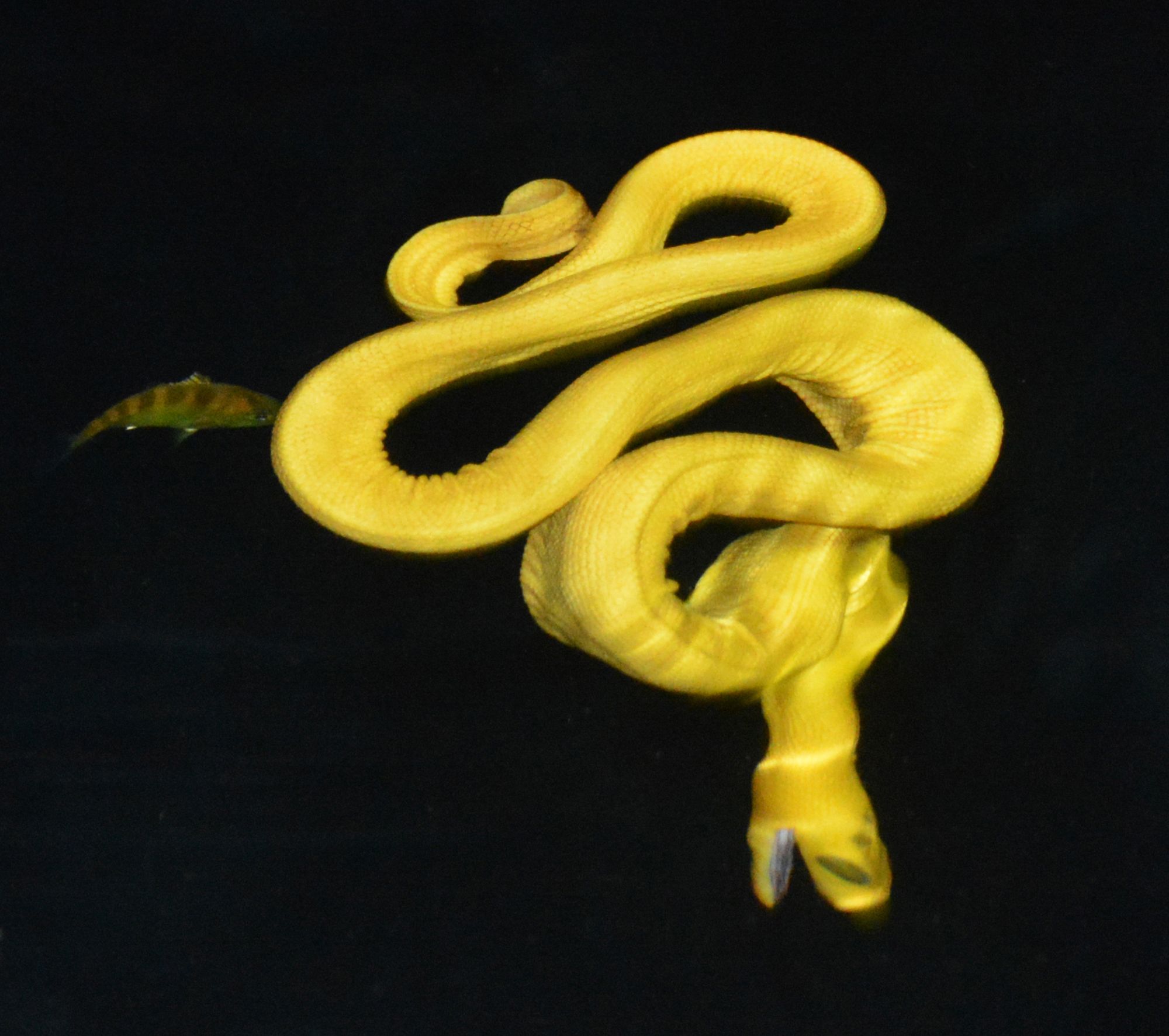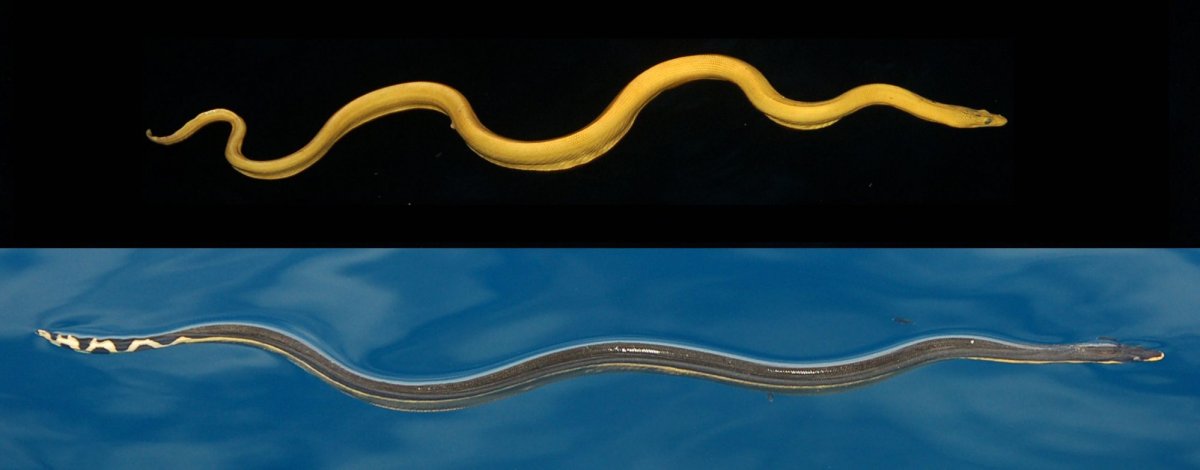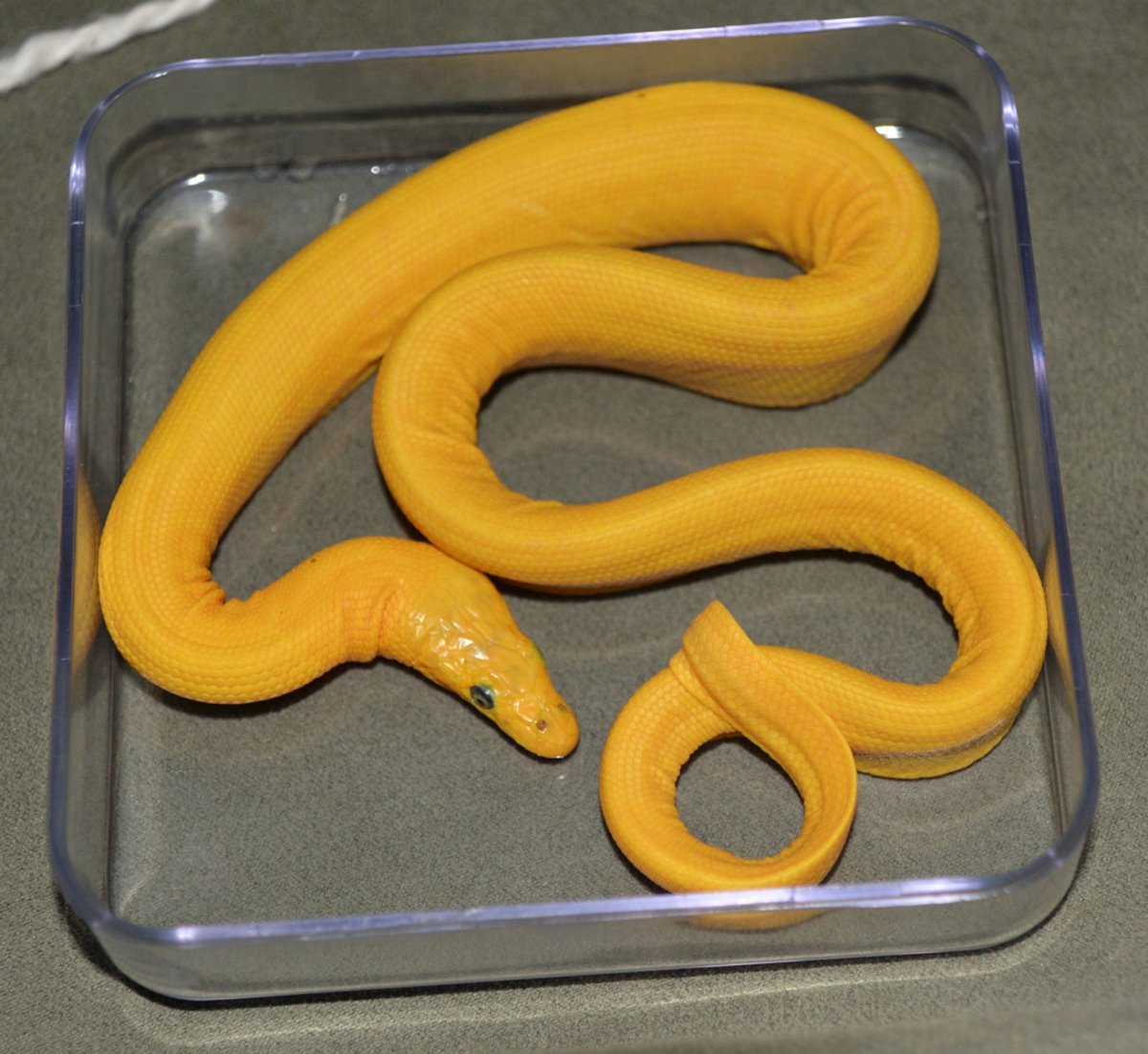
Researchers have discovered a new type of marine serpent hidden in the choppy, warm waters of Golfo Dulce, a tropical fjord on Costa Rica's Pacific coast. Not only is the yellow sea snake, as they've named it, new to researchers, but so is its way of hunting. This peculiar reptile lingers at the ocean surface curled up in a ball, striking at fish that swim too close. And it prefers to catch its unsuspecting prey at night in rough seas.
At first, scientists thought this animal was merely a uniquely colored variant of the yellow-bellied sea snake, also known as Hydrophis platurus. But a new study published in the journal ZooKeys suggests that it's a distinct subspecies and possibly even a new species.
Yellow-bellied sea snakes, the world's most widespread serpent, are already strange. They live in saltwater, a rarity among legless reptiles, and give birth to live young, which only the minority do. Though they spend all their time in the sea, studies have shown that they require freshwater because they become dehydrated when exposed only to saltwater in the lab. But it's a mystery how they hydrate themselves. Researchers think they might slurp rain before it mixes into the ocean or slither to river deltas. And unlike the vast majority of reptiles, their skin absorbs as much as a third of the oxygen they need from seawater. This ability allows them to remain submerged for up to three and a half hours. Most other sea snakes must swim to land for drinking water and surface in order to breathe. Though not unusual among sea snakes, they also possess extremely toxic venom that could be potentially fatal, says Brooke Bessesen, a research fellow for Osa Conservation, a nonprofit group in Costa Rica. (No such deaths have been recorded.)
The new subspecies, named Hydrophis platurus xanthos, identified by Bessesen and Gary Galbreath, an evolutionary biologist at Northwestern University, shares all these remarkable traits, but with some differences. Yellow-bellies, as the name implies, have straw-colored tummies and are black on top, whereas the Golfo Dulce snakes are entirely yellow. The former is bold, liable to strike at researchers who try to grab it, and the latter is more skittish. Bessesen had some trouble catching the elusive species because they would plunge below the surface at the sound of a boat's motor. The familiar yellow-bellied snakes prefer to hunt in very smooth water, where they stretch out like a floating twig. The Costa Rican subspecies usually hunts at night in choppy water, curled up in a sinusoidal bundle, most likely to avoid being buffeted by the strong waves, Bessesen says. This posture acts like a "little buoy that minimizes the sense of movement, [stabilizing] the snake," she adds.

Bessesen recalled her shock upon seeing this newly identified snake in its unique feeding position, eating a fish it had just struck. "It was one of the coolest things I've ever seen," she says. This odd trait supports the argument that the Costa Rican snake is distinct from yellow-bellied sea snakes, says Alan Resetar, with Chicago's Field Museum, who wasn't involved in the paper.
The discovery did not come easily. Bessesen spent more than 450 hours in a little boat in Golfo Dulce with research assistant Jorge Largaespada to study the sea snakes, carefully pulling them up and measuring them before returning them to the ocean. She also found some previously collected specimens at the University of Costa Rica's Zoological Museum, noting that they average under 2 feet in length and a weight of 50 grams, or 0.1 pounds. Although they had previously been found and collected, they hadn't been identified as a unique subspecies.
This fjord, an inlet between cliffs, presents several challenges for snakes making their habitat there. Water in the Golfo Dulce, which translates to "sweet gulf," is warmer than the surrounding Pacific. Bessesen suspects these snakes evolved their yellow coloration to keep cool: A yellow back absorbs less heat than a black back. The semi-isolated structure of the fjord, separated from the sea by a shelf-like partition, prevents the normal mixing of water that would occur in a gulf, Bessesen says. This unique geography may have allowed the yellow sea snake to become separated enough from its brethren to evolve into a new subspecies, she adds.

Bessesen became interested in the yellow sea snake while surveying the biodiversity of the gulf in 2010. The region, she discovered, is a crucial habitat for many creatures, such as endangered green sea turtles. She has found about 250 of these animals there and thinks the gulf is a way station for turtles migrating between the Galapagos and Mexico. Golfo Dulce also functions as a nursery for newborn scalloped hammerhead and humpback whales.
This rich ecology is threatened by water pollution, agricultural runoff and boat traffic, says Bessesen. She hopes research on the yellow sea snake will prompt more protections for the gulf and the unique animals therein.
Uncommon Knowledge
Newsweek is committed to challenging conventional wisdom and finding connections in the search for common ground.
Newsweek is committed to challenging conventional wisdom and finding connections in the search for common ground.
About the writer
Douglas Main is a journalist who lives in New York City and whose writing has appeared in the New York ... Read more
To read how Newsweek uses AI as a newsroom tool, Click here.








